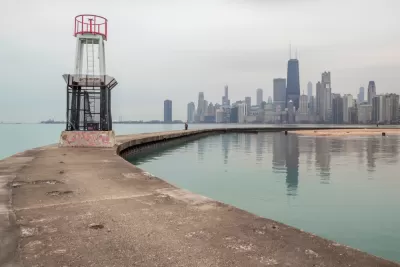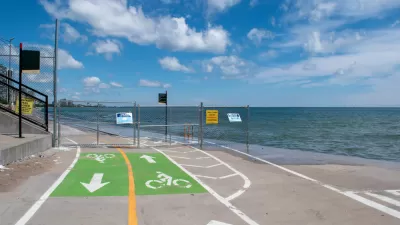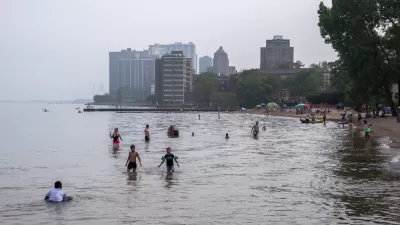Lake Michigan has reached historic levels this summer. Properties on the Far North Side are most at risk. Swimmers have already been called back from the shore.

Tony Briscoe reports:
For the second straight month, according to preliminary records, Lake Michigan has crested to its highest mark in over three decades — each time 1 inch shy of record highs set in 1986. It takes roughly 780 billion gallons of water to raise Lake Michigan 1 inch. Since 2013, the lake has risen nearly 6 feet from record lows. And in Chicago, no part of the shoreline has come away unscathed.
This year, the buoyant water has swallowed at least two Chicago beaches entirely and periodically closed others. It has swiped fishermen from piers, swimmers from beaches and submerged jetties, creating hazards for boaters. It has flooded heavily trafficked parts of lakefront bicycle and pedestrian pathways, leaving some stretches underwater and others crumbling.
And there are reasons to believe it's only going to get worse, according to Briscoe. All of those warning signs have come during the calm summer weather. Traditionally, the most powerful storms on the lake come in the fall.
Briscoe provides a lot more anecdotes and evidence about the historic summer on Lake Michigan in the source article.

Maui's Vacation Rental Debate Turns Ugly
Verbal attacks, misinformation campaigns and fistfights plague a high-stakes debate to convert thousands of vacation rentals into long-term housing.

Planetizen Federal Action Tracker
A weekly monitor of how Trump’s orders and actions are impacting planners and planning in America.

In Urban Planning, AI Prompting Could be the New Design Thinking
Creativity has long been key to great urban design. What if we see AI as our new creative partner?

Florida Seniors Face Rising Homelessness Risk
High housing costs are pushing more seniors, many of them on a fixed income, into homelessness.

Massachusetts Budget Helps Close MBTA Budget Gap
The budget signed by Gov. Maura Healey includes $470 million in MBTA funding for the next fiscal year.

Milwaukee Launches Vision Zero Plan
Seven years after the city signed its Complete Streets Policy, the city is doubling down on its efforts to eliminate traffic deaths.
Urban Design for Planners 1: Software Tools
This six-course series explores essential urban design concepts using open source software and equips planners with the tools they need to participate fully in the urban design process.
Planning for Universal Design
Learn the tools for implementing Universal Design in planning regulations.
Gallatin County Department of Planning & Community Development
Heyer Gruel & Associates PA
JM Goldson LLC
City of Camden Redevelopment Agency
City of Astoria
Transportation Research & Education Center (TREC) at Portland State University
Jefferson Parish Government
Camden Redevelopment Agency
City of Claremont





























